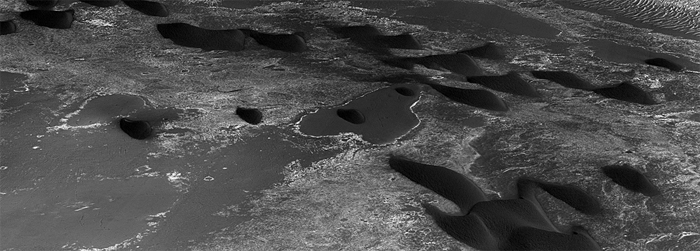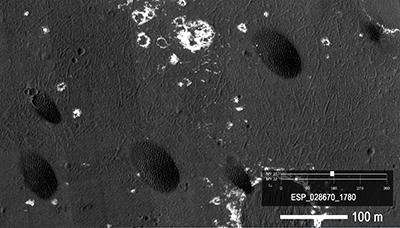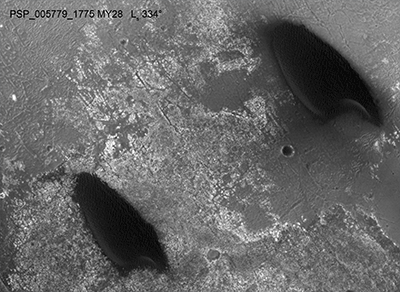.

Aeolian-driven bedform activity is now known to occur in many regions of Mars, based on surface and orbital observation of contemporary martian ripple and dune mobility events. Many of these sites have only been monitored with sufficient resolution data for the last few Mars years, when the High Resolution Imaging Science Experiment (HiRISE) began acquiring images of Mars. One exception is the well-monitored Endeavour crater in Meridiani Planum, which was one of the first known sites of unambiguous dune activity (migration and deflation). However, those early detections used lower resolution data over longer temporal baselines (versus the HIRISE imagery now available), leaving some measurements poorly constrained. New orbital and surface observations of Endeavour show multiple spatial (cm, m, km) and temporal (seasons, Mars Year) scales of aeolian-driven surface change, which confirms earlier reports. Dome dunes in the eastern portion of the crater persistently deflate, disseminating dark sand across lighter-toned regolith and/or eroded bright dust, and likely also contribute to the crater interior’s episodic decreases in orbital albedo measurements. Other dome dunes are detected with the highest migration rates (4-12 m per Mars year) and volumetric sand fluxes reported yet for Mars. Estimated dune construction times or “turnover times” here and elsewhere on Mars are significantly shorter than martian obliquity cycles, implying that it is not necessary to invoke paleoclimate wind regimes to explain current dune morphologies. Located on the crater rim, the Opportunity rover detected evidence for near- and far-field aeolian-driven activity, with observations of spherules/sand movement in the rover workspace, bedform albedo alteration, and dust-lifting events. Observations of intracrater dunes show periodic shifting dark streaks that significantly constrain local wind regimes (directionality and seasonality). Constraints on wind directions from surface and orbital images show that aeolian bedforms can be extremely active in bi-, and possibly tri-, modal wind regimes, and during periods without major dust storms.
.

---

Quelle>: NASA
